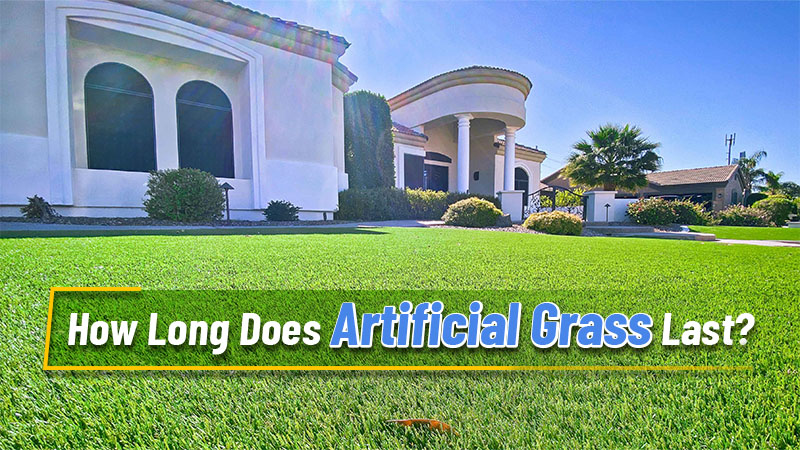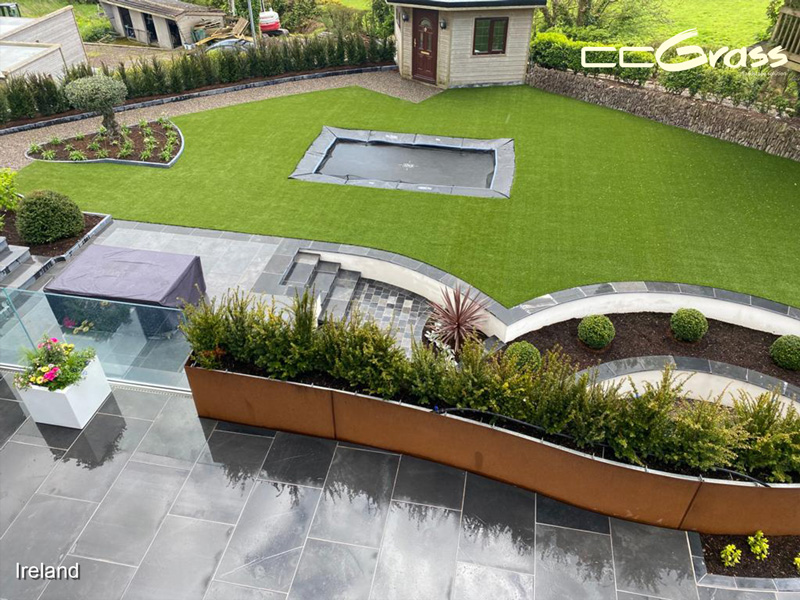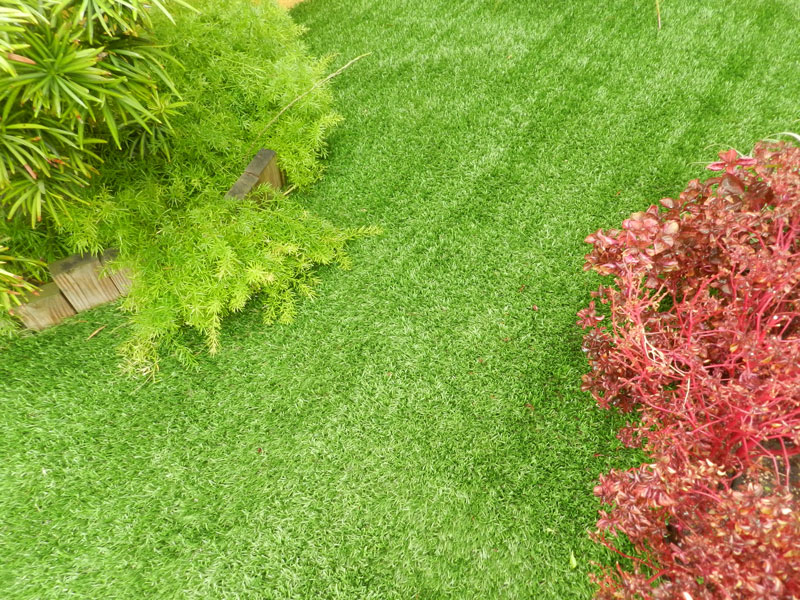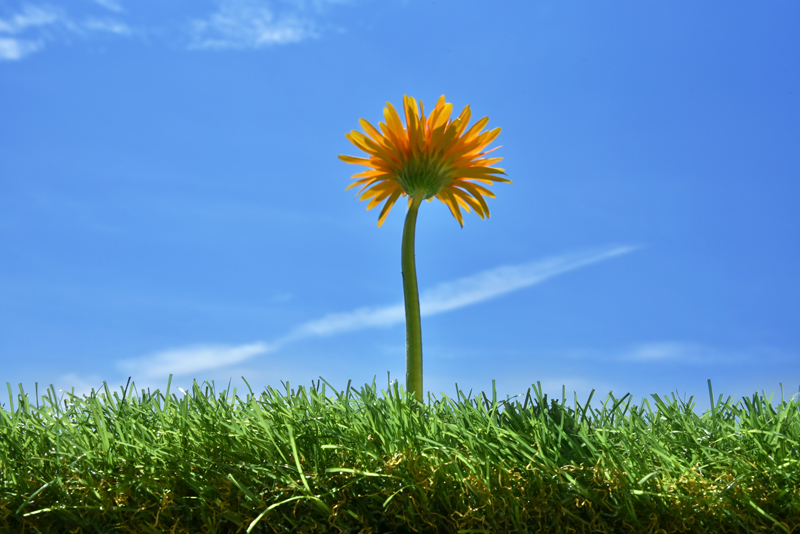How Long Does Artificial Grass Last?
- 05/25/2024
Once confined to the realms of sports arenas and commercial complexes, artificial grass has now found its way into the heart of residential landscapes. Its allure lies in the promise of minimal upkeep and perpetually verdant aesthetics, making it an enticing substitute for natural lawns.
Yet, amidst its array of advantages, one question looms large: How long does artificial grass last? In this article, we’ll explore this question to help you decide if the investment is worth it.

In this article:
How long can you expect artificial grass to last?
The artificial turf lifespan can vary greatly depending on several factors. However, with proper installation and maintenance, high-quality artificial grass can endure for 10 to 15 years, and in some cases, even up to 20 years.
Artificial grass manufacturers typically provide warranties ranging from 8 to 12 years, which speaks to their confidence in the product’s durability. The actual longevity will depend on usage, maintenance, and environmental conditions. Let’s explore these factors in detail.
Key factors in artificial grass longevity
Quality of materials
Fiber material: The type of fibers used in synthetic grass plays a crucial role in its durability. Polyethylene and polypropylene are common materials, with polyethylene being more resilient and durable.
Backing material: The quality of the backing material, which holds the fibers in place, also affects the turf’s lifespan. Polyurethane backings are known for their durability compared to latex options.
Installation quality
Proper installation is critical for maximizing the lifespan of synthetic grass. Professional turf installation ensures proper drainage, infill distribution, and seam strength, which prevent premature wear and tear.
Additionally, expert installers bring a polished finish with evenly laid grass, seamless seams, and securely anchored edges, enhancing the overall appearance of your outdoor space.

Usage and foot traffic
The amount and type of usage significantly affect how long artificial grass will last. Areas with high foot traffic, such as sports fields, playgrounds, or commercial spaces, will experience more wear and may require more frequent maintenance or replacement.
High-quality artificial grass is designed to handle significant use, but it’s important to consider the intended application and choose a product that matches the expected level of activity.
Maintenance
Maintaining fake grass requires minimal effort on your part; yet, even a small amount of maintenance can greatly prolong the artificial turf’s lifespan. This includes brushing to maintain the grass blades’ upright position, removing debris, and occasionally rinsing to keep it clean and fresh.
For detailed guidance on artificial turf maintenance, check out our comprehensive article How to Clean Artificial Grass?
Climate conditions
Exposure to harsh weather conditions can also influence the durability of artificial grass. In warmer climates, such as Florida, artificial grass offers an attractive solution for reducing water bills while maintaining a green landscape. However, it’s essential to choose reliable turf with adequate UV protection. Low-quality fake grass exposed to direct sunlight can fade, become brittle, or develop fibrosis over time, shortening its lifespan.
CCGrass excels with its advanced UV protection methods, integrating UV inhibitors directly into the materials during manufacturing for long-lasting vibrancy and durability. Our grass products exceed industry benchmarks, undergoing rigorous anti-UV testing by SGS, including UVA 5000h and UVB 3000h.
When to replace fake grass?
Knowing when to replace artificial grass is crucial to maintain a safe and attractive lawn. Here are some signs indicating it might be time to replace your old turf lawn with a new one:

Visual signs
Significant wear: High-traffic areas may show signs of wear, such as matting or thinning of the grass fibers. If the synthetic blades are visibly damaged or worn down, the lawn’s overall appearance will suffer.
Fading color: Even if you choose high-quality artificial grass with UV protection, prolonged exposure to the sun can still result in gradual fading over the years. If the color has significantly faded and looks unattractive, replacement might be necessary.
Safety concerns
Exposed seams: The seams where pieces of synthetic turf are joined can become exposed over time. This can happen due to adhesive failure. Exposed seams can be a tripping hazard and need to be addressed promptly.
Deteriorated backing: The backing material provides support and stability to the fake grass. If the backing has started to break down or delaminate, the grass will lose its structure and integrity, necessitating replacement.
Performance degradation
Reduced comfort: Over time, the infill material can compact and harden, reducing the cushioning effect that makes artificial turf comfortable to walk and play on. If the grass feels hard and less comfortable, replacing the infill or the entire lawn might be necessary.
Loss of resilience: Quality artificial grass is designed to be resilient and bounce back after being walked on. If the grass no longer springs back and remains flattened, it has likely reached the end of its lifespan.
Functional issues
Poor drainage: Inadequate drainage can lead to water pooling on the surface after rainfall, creating a breeding ground for mold and algae. If efforts to improve drainage prove ineffective, it may be time to consider replacing the grass to prevent further damage.
Odors and stains: Persistent odors and stains that cannot be removed through regular cleaning may also signal the need for new artificial grass. This is particularly common in areas frequently used by pets.

Conclusion: Is artificial grass worth it?
In summary, while estimates of lifespan may vary due to several factors, high-quality residential artificial grass typically lasts at least 8-10 years. By staying proactive with simple upkeep tasks, you can maximize the longevity of your investment.
Investing in fake grass can be a worthwhile decision for many homeowners and businesses. It offers a beautiful, low-maintenance alternative to natural grass, saving time, water, and money in the long run.
While the initial cost can be higher, the extended lifespan and reduced upkeep often make it a smart choice. If you’re still on the fence, consider reading our detailed comparison in the article Artificial Grass vs. Natural Grass: Which Should You Choose for Your Lawn?
Now that you’ve had the clear answer for how long the artificial grass last, if you’re interested in our products and services, feel free to contact us anytime at +86 25 6981 1666 or [email protected].
Whether you’re an artificial grass wholesaler, distributor, retailer, contractor, chain stores, etc., CCGrass can offer you competitive wholesale pricing solutions.



